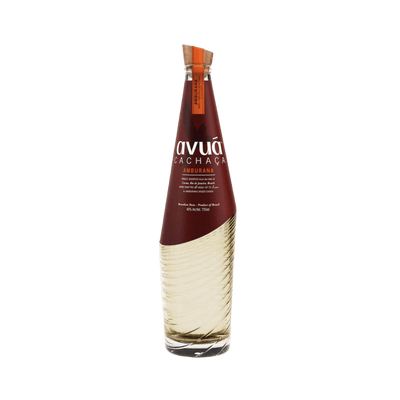Aged Cachaça
What is Aged Cachaça?
Aged Cachaça is Brazilian sugarcane spirit that has been matured in wooden barrels for a minimum of one year, developing deeper complexity and smoother character than its unaged counterpart. The aging process transforms the clear, fiery spirit into something golden and mellow, picking up vanilla, caramel, and spice notes from the wood while softening the sharp edges that define fresh cachaça. This maturation creates a sipping spirit that rivals aged rums and tequilas, with Brazilian distillers often using native hardwoods like amburana and jequitibá that impart unique tropical fruit and herbal flavors you won't find anywhere else.
Learn More About Aged Cachaça
What makes Aged Cachaça unique?
Aged cachaça transforms from the fresh, grassy spirit most people know into something entirely different through extended rest in wooden barrels, developing complex notes of vanilla, caramel, and tropical wood that rival fine aged rums. While silver cachaça shows off the pure sugarcane character and gold cachaça gets just a kiss of wood influence, aged expressions spend years mellowing and concentrating flavors, often becoming sipping spirits rather than mixing bases. The tropical climate of Brazil accelerates the aging process compared to whiskey or rum aged in cooler climates, creating remarkably smooth and sophisticated spirits that showcase cachaça's potential as a world-class aged spirit.
How is Aged Cachaça made?
Aged cachaça starts its life just like the unaged version—fresh sugarcane juice gets fermented and distilled in copper pot stills or column stills. The magic happens when distillers transfer the clear spirit into wooden barrels, typically made from native Brazilian woods like amburana, jequitibá, or balsamo, though some producers use traditional oak. Time does the heavy lifting here, as the cachaça slowly absorbs flavors, tannins, and color from the wood over months or years, developing complexity and smoothness that transforms the raw spirit into something completely different.
How do you drink Aged Cachaça?
Aged cachaça shines brightest when sipped neat or on the rocks, allowing you to appreciate the complex vanilla, caramel, and wood notes that develop during barrel aging. While younger cachaças often find their way into caipirinhas and tropical cocktails, the aged expressions deserve more respectful treatment in spirit-forward drinks like old fashioneds or manhattans, where the wood aging can complement whiskey-style preparations. These sophisticated sips work beautifully during cooler months when you want something warming and contemplative, making aged cachaça perfect for autumn evenings or winter nightcaps when you're looking to explore something beyond the usual suspects.
How do I choose a good Aged Cachaça?
Look for cachaças aged in native Brazilian woods like amburana or balsamo, which impart unique vanilla and spice notes you won't find in standard oak-aged spirits. For sipping neat or in simple serves like an Old Fashioned variation, go for longer-aged expressions (3+ years) that have developed complexity and smoothness. If you're mixing into fruit-forward cocktails like a Caipirinha or punch, a younger aged cachaça (1-2 years) provides just enough wood character without overwhelming the fresh ingredients.
Nutritional Information
Typical Calorie Range per Ounce: 64-69 calories
Typical Carbohydrate Range per Ounce: 0-0.1 grams
Typical Sugar Range per Ounce: 0-0.1 grams
Typically Gluten Free: Yes
Aged cachaça maintains the clean nutritional profile you'd expect from a premium distilled spirit. The aging process in Brazilian wood barrels adds complex flavors without introducing significant calories or carbohydrates. Since cachaça is made from fermented sugarcane juice rather than gluten-containing grains, it's naturally gluten-free. That said, always check the specific product label and manufacturer information to confirm gluten-free status, especially if you have celiac disease or severe gluten sensitivity. Some producers might use additives or processing methods that could introduce gluten contamination.
Scrolled this far? Your reward? Aged Cachaça Trivia!
- Brazil's aged cachaça masters use over 30 different native wood types for aging—not just oak. Amburana wood gives notes of vanilla and cinnamon, while balsamo wood creates almost chocolatey flavors. Each regional wood tells its own story, making Brazilian aged cachaça one of the most diverse spirits on the planet in terms of wood influence.
- The oldest known aged cachaça dates back to 1876 and was discovered in 2008 in the cellar of Fazenda Sobradinho. This 132-year-old bottle sold for over $30,000 at auction, proving that cachaça collecting is serious business. The liquid inside had turned dark amber and developed flavors described as "liquid history."
- Aged cachaça must legally spend a minimum of one year in wood to earn the "envelhecida" designation, but the real magic happens after five years when the spirit begins absorbing tannins and developing the complex caramel notes that rival aged rum. Many premium producers age their cachaça for 15-20 years in massive 20,000-liter wooden vats.
- Temperature swings in Brazil's interior create rapid aging cycles that would take twice as long in cooler climates. The extreme heat causes the wood to expand and contract dramatically, forcing the spirit deep into the grain and back out again multiple times per day. This natural "breathing" accelerates the aging process significantly.
- Master cachaça blenders called "mestres" often use a solera-style system borrowed from sherry production, but with a Brazilian twist—they'll blend cachaças aged in different native woods to create signature house styles. Some distilleries guard their blending formulas more closely than Coca-Cola protects its recipe.
Higher-proof spirits can be intense. Mix carefully, taste thoughtfully, and enjoy responsibly.
Gift message (optional)



